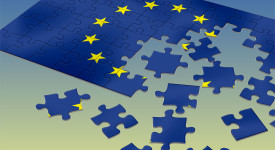The World Health Organization (WTO) and the European Union announced last week that Europe has logged a rise in HIV infections mostly driven by new cases in Russia and immigrants who got infected after their arrival. WHO Regional Director for Europe, Zsuzsanna Jakab, said that “despite all the efforts to fight HIV, this year the European region has reached over 142,000 new HIV infections, the highest number ever. This is a serious concern”. HIV statics in Europe is part of the recently published report by the WHO and the European Centre for Disease Prevention and Control in Stockholm.
According to the study, HIV infections rose by 4.4 percent on a year-to-year basis with 142,197 new cases reported in 2014 compared to 136,235 new infections in 2013. Most heterosexual transmissions have been registered in Russia and Eastern Europe with the former being responsible for about 60 percent of new cases. The 28EU countries along with the three states in the European Economic Area (EEA) – Iceland, Liechtenstein and Norway – represented 21 percent, but overall the number of infections has gone down in Western Europe.
Throughout the bloc, sex between men was the most widespread mode of HIV transmission, the trend, which has been on the rise at a worrying rate – from 30 percent diagnosed in 2005 to 42 percent last year. Only six countries of the EEA did not report an increase. About two thirds of all infections were among native-born Europeans while the remaining cases were among immigrants and foreign-born individuals. “When refugees and migrants are victims of social exclusion in receiving countries, they are at greater risk of HIV infection, and this may lead them to engage in risky behavior, increasing their risk for infection. This risk is exacerbated by inadequate access to HIV services and fear of being stigmatized,” Ms Jakab explained. However, the research found that most migrants get infected after they arrive in Europe, and the number of HIV infections in this group has fallen by 41 percent.







